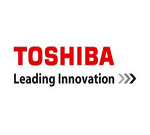Energy Star Goes To Tablets
January 24, 2013 by admin
Filed under Around The Net
Comments Off on Energy Star Goes To Tablets
Coming to a tablet near you soon, Energy Star ratings.
The specification will be part of the Energy Star version 6.1, according to documents posted on the U.S. Energy Star website. But a date for ratings on tablets has not yet been established, said Robert Meyers, product manager at Energy Star computers. Energy Star is a joint effort between the U.S. Environmental Protection Agency and the U.S. Department of Energy.
The Energy Star specification helps shoppers identify the most power-efficient products when making purchases. The Energy Star program already covers laptops, desktops, monitors, light bulbs, servers, household appliances and other products that are identified with a label. The use of Energy Star-labeled products helped cut close to US$18 billion from U.S. utility bills in 2010, according to the organization.
The EPA and DOE originally floated the idea of including tablets as part of Energy Star version 6.0 for products like laptops, desktops, displays, thin clients and networking equipment, which goes into effect on June 1. Some IT vendors that participate in the Energy Star program argued against the immediate inclusion of tablets, saying that those devices are more like smartphones than PCs and have different assembly and equipment. They argued that tablets and laptops differ on components such as batteries and networking equipment, and thus cannot be grouped together with PCs. The EPA and those stakeholders are now trying to gather a consensus on the definition of tablets and how to rate the devices.
Anonymous Attacks MIT
January 23, 2013 by admin
Filed under Around The Net
Comments Off on Anonymous Attacks MIT
Anonymous goes after the Massachusetts Institute of Technology (MIT) website after its president called for an internal investigation into what role it played in the prosecution of web activist Aaron Swartz.
MIT president Rafael Reif revealed the investigation in an email to staff that he sent out after hearing the news about Swartz’s death.
“I want to express very clearly that I and all of us at MIT are extremely saddened by the death of this promising young man who touched the lives of so many. It pains me to think that MIT played any role in a series of events that have ended in tragedy,” he wrote.
“I have asked Professor Hal Abelson to lead a thorough analysis of MIT’s involvement from the time that we first perceived unusual activity on our network in fall 2010 up to the present. I have asked that this analysis describe the options MIT had and the decisions MIT made, in order to understand and to learn from the actions MIT took. I will share the report with the MIT community when I receive it.”
Hacktivists from Anonymous defaced two MIT webpages in the wake of the announcement and turned them into memorials for Swartz.
Bonets Attack U.S. Banks
January 18, 2013 by admin
Filed under Around The Net
Comments Off on Bonets Attack U.S. Banks
Evidence collected from a website that was recently used to flood U.S. banks with junk traffic suggests that the responsible parties behind the ongoing DDoS attack campaign against U.S. financial institutions — thought by some to be the work of Iran — are using botnets for hire.
The compromised website contained a PHP-based backdoor script that was regularly instructed to send numerous HTTP and UDP (User Datagram Protocol) requests to the websites of several U.S. banks, including PNC Bank, HSBC and Fifth Third Bank, Ronen Atias, a security analyst at Web security services provider Incapsula, said Tuesday in a blog post.
Atias described the compromised site as a “small and seemingly harmless general interest UK website” that recently signed up for Incapsula’s services.
An analysis of the site and the server logs revealed that attackers were instructing the rogue script to send junk traffic to U.S. banking sites for limited periods of time varying between seven minutes and one hour. The commands were being renewed as soon as the banking sites showed signs of recovery, Atias said.
During breaks from attacking financial websites the backdoor script was being instructed to attack unrelated commercial and e-commerce sites. “This all led us to believe that we were monitoring the activities of a Botnet for hire,” Atias said.
“The use of a Web Site as a Botnet zombie for hire did not surprise us,” the security analyst wrote. “After all, this is just a part of a growing trend we’re seeing in our DDoS prevention work.”
Will Tegra 4 Launch In Q2?
Tegra 4 was supposed to be production ready in Q4 2012 and the general expectation was that CES 2013 would be marked by the launch of phones and tablets based on the new chipset.
It turns out that the chip needed another re-spin, something that usually creates a delay of roughly a quarter. We don’t know which part of the chip was to blame but our sources claim that Tegra 4 is a complex chip with a lot of components where many things can go wrong.
Nvidia dared to move to 28nm, change the core from A9 to A15 and find a way to make its LTE work. There were a lot of things that could go wrong and obviously some did.
This is why Intel first shrinks the core, for example from 32nm to 22nm, and then in its “tock” cycle goes for a newly designed core. Nvidia doesn’t have that luxury, as making a 28nm version of Tegra 3 would not be enough for the SoC market in 2013.
A few people at Nvidia have been telling us that the chip has been sampled to accounts and Nvidia is planning to have some designs announced at the Mobile World Congress. We managed to confirm this schedule with some Nvidia partners.
Broadcom Goes UltraHD
January 16, 2013 by admin
Filed under Consumer Electronics
Comments Off on Broadcom Goes UltraHD
As TV manufacturers show off UltraHD TVs at CES, communications chip maker Broadcom is introducing the guts of future gateways that will be able to deliver video for those sets into viewers’ homes.
Broadcom’s BCM7445 silicon platform, announced just hours before the show opened on Tuesday morning, will be able to process incoming video from cable, carrier and satellite services that has four times the resolution of typical 1080p video offered today, according to the company.
Like the eye-catching but expensive TVs on the show floor in Las Vegas, the BCM7445 is just one of the first of many steps to consumers watching UltraHD shows at home. New content, displays and delivery technologies will all be required for the new resolution, which is also known as 4K.
Broadcom expects its chip to be in volume production by the middle of next year, in time for mainstream UltraHD TVs that will probably hit the market for the late 2014 holiday season, said Joe Del Rio, associate product line manager at Broadcom. However, service providers, which will probably be the distributors of most of the gateways built with the BCM7445, may take longer to start sending UltraHD video to their subscribers, Del Rio said.
Sharp Says No To Intel
January 15, 2013 by admin
Filed under Consumer Electronics
Comments Off on Sharp Says No To Intel
While Sharp is desperately looking for more cash, it appears that it will try busking outside CES with a dog on a string before it takes money from Intel.
A senior senior executive from the Japanese company told the Mercury News denied that the company was looking for money from Intel. Industry analysts had speculated that Intel and Sharp, which supplies screens to Apple (AAPL) for its latest iPhonem, were in investment discussions.
Sharp is fighting for survival after years of losses. In November, it said it may not be able to survive on its own after full-year net losses to doubled to $5.6 billion. Sharp Vice President Kozo Takahashi told reporters at a roundtable briefing on the sidelines of the Consumer Electronics Show in Las Vegas that the company’s finances have been weakened considerably and we are considering ways to deal with that.
Passwords Continue As The Weakest Link
Comments Off on Passwords Continue As The Weakest Link
 Passwords aren’t the only failure point in many recent widely publicized intrusions by hackers.
Passwords aren’t the only failure point in many recent widely publicized intrusions by hackers.
But passwords played a part in the perfect storm of users, service providers and technology failures that can result in epic network disasters. Password-based security mechanisms — which can be cracked, reset and socially engineered — no longer suffice in the era of cloud computing.
The problem is this: The more complex a password is, the harder it is to guess and the more secure it is. But the more complex a password is, the more likely it is to be written down or otherwise stored in an easily accessible location, and therefore the less secure it is. And the killer corollary: If a password is stolen, its relative simplicity or complexity becomes irrelevant.
Password security is the common cold of our technological age, a persistent problem that we can’t seem to solve. The technologies that promised to reduce our dependence on passwords — biometrics, smart cards, key fobs, tokens — have all thus far fallen short in terms of cost, reliability or other attributes. And yet, as ongoing news reports about password breaches show, password management is now more important than ever.
All of which makes password management a nightmare for IT shops. “IT faces competing interests,” says Forrester analyst Eve Maler. “They want to be compliant and secure, but they also want to be fast and expedient when it comes to synchronizing user accounts.”
Is NFC Catching On?
January 10, 2013 by admin
Filed under Around The Net
Comments Off on Is NFC Catching On?
Near Field Communication (NFC) is steadily gaining adoption in the U.S. for sharing data and music among smartphones, but the technology faces years of slow growth as a replacement for physical wallets.
NFC will take a minimum of three more years to grab hold as a technology that enables so-called mobile wallets as a replacement for credit cards and cash in the U.S., according to a consensus of five analysts. And by “grab hold,” these analysts mean being used by only 10% of mobile phone users to make digital purchases.
Gartner analyst Avivah Litan predicts that NFC payments will hit the 10% threshold in 2015, compared to the process of SMS (texting) payments that is expected to represent 50% of mobile payment volume globally in that same year. “We’re still on the edge when it comes to NFC innovation,” Litan says. “It will take a decade before it’s mainstream across the globe.”
Dozens of new smartphones that run Android, BlackBerry and Windows, and that include an NFC chip, launched last year. But Apple notably did not put NFC in its new iPhone 5 when the phone launched in September. That move “surely had a significant detrimental impact on industry adoption of NFC,” Litan says, given Apple’s influence in the mobile market.
Apple justified the move by saying that consumers already could use its Passbook app, which shows barcodes on the display, instead of NFC. The barcodes contain information that can be scanned by optical readers to let users board planes and redeem movie tickets — tasks that Apple notes are “the kinds of things consumers need today.”
Some have criticized Apple for omitting NFC from the iPhone 5, which has led to a widespread reassessment of NFC’s immediate future, especially in the U.S.
Was The Prize Stock For 2012?
 If you wanted to know the IT company which was a rotten investment this year, you might be thinking Facebook, HP or RIM.
If you wanted to know the IT company which was a rotten investment this year, you might be thinking Facebook, HP or RIM.
However according to Business Insider is starting to look like the so-called industry leader, Apple might have caused its investors the biggest headaches. More money has been lost in the past three months in Apple stock than has ever been lost in the tech disasters known as Hewlett-Packard and Research In Motion combined.
HP’s stock price peaked above $50 a few years ago, and now it’s trading at $14 and RIM peaked above $140 a few years ago, and it’s trading for $11. However Jobs Mob’s share price peaked above $700 three months ago and is now trading just above $500. This means that on a percentage basis, therefore, Apple’s stock is down much less than either Hewlett-Packard RIM but has cost shareholders a lot more money.
When HP investors have lost about $100 billion since the 2000 peak and RIM has lost $65 billion since the 2000 peak. Apple has cost its shareholders value in three months. What is more amusing is that about four months ago, I was lectured by an Apple fanboy who told me that the company is going to be worth a trillion dollars by the end of the year and he just invested more than $100,000 in the company. Looks like he would have been better off putting it on a horse.
Toshiba To Offer A 20-megapixel Image Chip
Comments Off on Toshiba To Offer A 20-megapixel Image Chip
 Toshiba is gearing up for to offer a 20-megapixel image sensor for digital cameras that it says will be the highest resolution of its kind.
Toshiba is gearing up for to offer a 20-megapixel image sensor for digital cameras that it says will be the highest resolution of its kind.
The Tokyo-based firm said the new chips will be able to support capturing 30 frames per second at full resolution. They will also be able to shoot video at 60 frames per second at 1080P or 100 frames at 720P.
Toshiba said it will begin shipping samples of the new CMOS chips in January, with mass production to begin in August of 300,000 units monthly. Toshiba is best known in components for its NAND flash memory, which it develops with partner SanDisk, but is also a major manufacturer of LSI and other semiconductors.
Digital point-and-shoot cameras are steadily falling in price, squeezed between brutal competition among manufacturers and the increasing threat of smartphones and mobile devices. While the number of pixels a camera can capture is not always a direct measure of the overall quality of its images, it is a key selling point to consumers.
The image resolution of top-end smartphones now often meets or exceed that of digital cameras. The Nokia 808 PureView launched earlier this year has a 41-megapixel image sensor.
The Japanese manufacturer said it has increased the amount of information pixels in the new chip can store compared to its previous generation of CMOS, producing better overall images. It has also reduces the size of pixels – the new 20-megapixel version has individual pixels that measure 1.2 micrometers, down from 1.34 micrometers in its 16-megapixel product.








 Sign up for our Technology Newsletter
Sign up for our Technology Newsletter